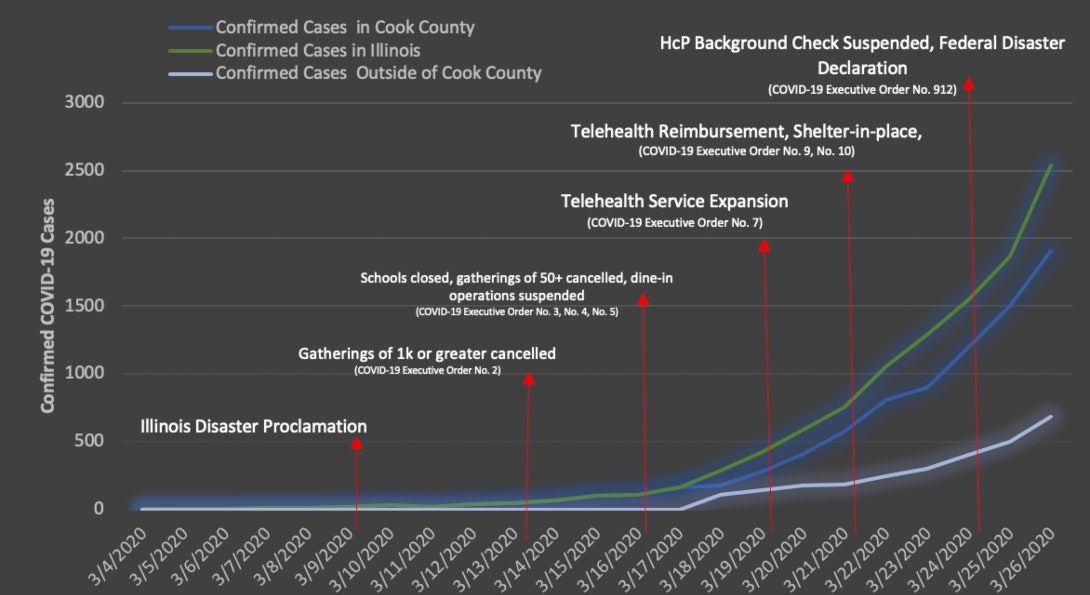Policy Brief: Federal Disaster Declaration and COVID-19 Executive Order No. 12

The Federal Government issues a disaster declaration for the Illinois and the Governor’s Office takes steps to strengthen the healthcare work force.
Note: this is a policy brief in a series of publications from the Social Vulnerability Group at the UIC School of Public Health's Health Policy and Administration division.
On March 24th COVID-19 Executive Order No. 12 suspended healthcare background checks to expedite the re-entry of nursing assistants into the workforce. Recertification and renewal background checks will be waived for individuals who are certified as nursing assistants and are currently inactive. The purpose of this Executive Order is to quickly bolster the state’s clinical support personnel and alleviate stress on Illinois’ healthcare system. Prior to this Executive Order, Illinois has been increasing social distancing policies to flatten the curve of the pandemic and limit the spread of COVID-19, but this is Illinois first action in attempting to increase the State’s capacities to manage the crisis.
The Federal Government has issued a disaster declaration for the State of Illinois on March 26th. The declaration will offer emergency funding to assist the state in management and recovery of the COVID-19 pandemic. The Illinois Governor’s office has indicated the emergency funding will be used to increase housing and hospital capacity.
COVID-19 cases in Illinois continue to mount. Since Monday, March 23, there have been 1,480 new confirmed cases bringing the state total to 2,538.
With the peak yet to crest in Illinois, the healthcare system is going to experience continued strain. To mitigate as much fallout as possible, Illinois is taking steps to provide additional support to treat COVID-19 as well as regular healthcare needs of local communities. Leveraging federal disaster recovery funding and the latest Executive Order is an early step in expediting systematic support in Illinois. We will continue to track and monitor the policy impact on flattening the curve and the burden reduction within the healthcare system as a result of COVID-19 in Illinois.
Data sources used include the COVID Tracking Project, Illinois data from both the Johns Hopkins Github and the Illinois Department of Public Health, and policy sources from the Illinois Governor’s Office.